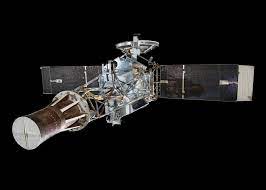On August 27, 1962, a significant milestone in space exploration was achieved with the successful launch of the Mariner 2 space probe by NASA. Mariner 2 became the first spacecraft to conduct a successful flyby of another planet, making a historic encounter with Venus. The Mariner 2 mission was part of the larger Mariner program, a series of robotic spacecraft missions designed to explore the planets of our solar system. The objective of Mariner 2 was to study Venus, our neighboring planet, and gather scientific data about its atmosphere, magnetic field, and overall environment. The Mariner 2 probe was launched from Cape Canaveral, Florida, aboard an Atlas-Agena rocket. It embarked on a 109-day journey to Venus, covering a distance of approximately 108 million kilometers (67 million miles). The spacecraft was equipped with a suite of scientific instruments, including a magnetometer, a cosmic dust detector, and an infrared radiometer. On December 14, 1962, Mariner 2 made its closest approach to Venus, coming within 34,773 kilometers (21,607 miles) of the planet's surface. The spacecraft successfully transmitted data back to Earth, providing invaluable insights into Venus' atmosphere and other characteristics. One of the most significant discoveries made by Mariner 2 was the confirmation of Venus' extremely high surface temperatures. The spacecraft's radiometer measured temperatures as high as 425 degrees Celsius (797 degrees Fahrenheit), making Venus the hottest planet in our solar system. This finding helped scientists better understand the extreme greenhouse effect occurring on Venus, where a thick atmosphere traps heat and creates a runaway greenhouse effect. Mariner 2 also detected a weak magnetic field around Venus, indicating the presence of an ionized gas envelope surrounding the planet. This discovery provided valuable information about Venus' magnetosphere and its interaction with the solar wind. The success of the Mariner 2 mission paved the way for future planetary exploration missions and expanded our understanding of the solar system. It demonstrated the feasibility of interplanetary travel and the ability to gather scientific data from other planets. The Mariner 2 probe also had a significant impact on the field of space exploration and technology development. The spacecraft's success encouraged further investment in robotic missions and inspired scientists and engineers to push the boundaries of what was possible in space exploration. In addition to its scientific contributions, Mariner 2 also played a crucial role in the broader context of the Space Race between the United States and the Soviet Union. The successful mission demonstrated American technological prowess and bolstered national pride during a time of intense competition and rivalry between the two superpowers.
27 Aug, 1962 Mariner 2 Space Probe
